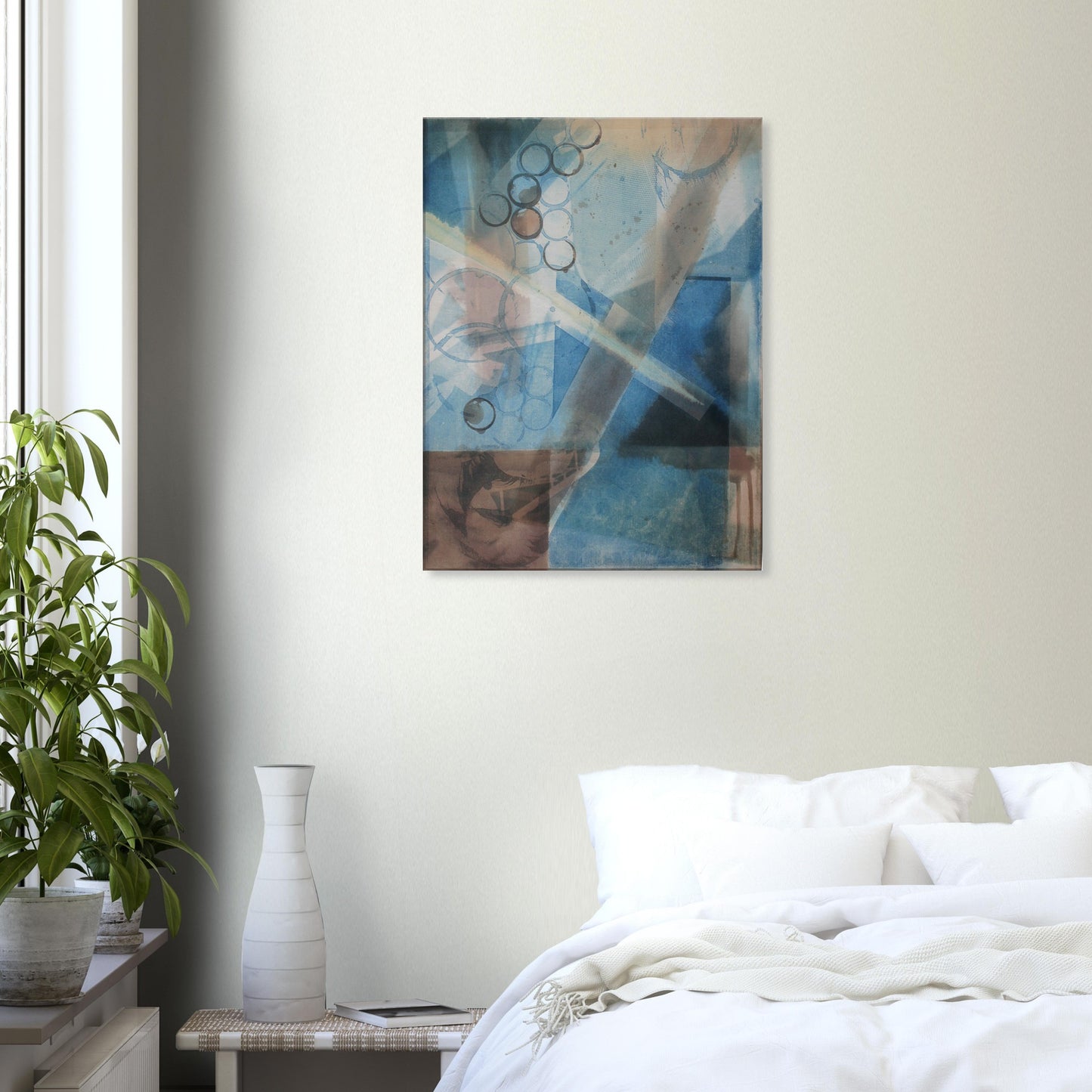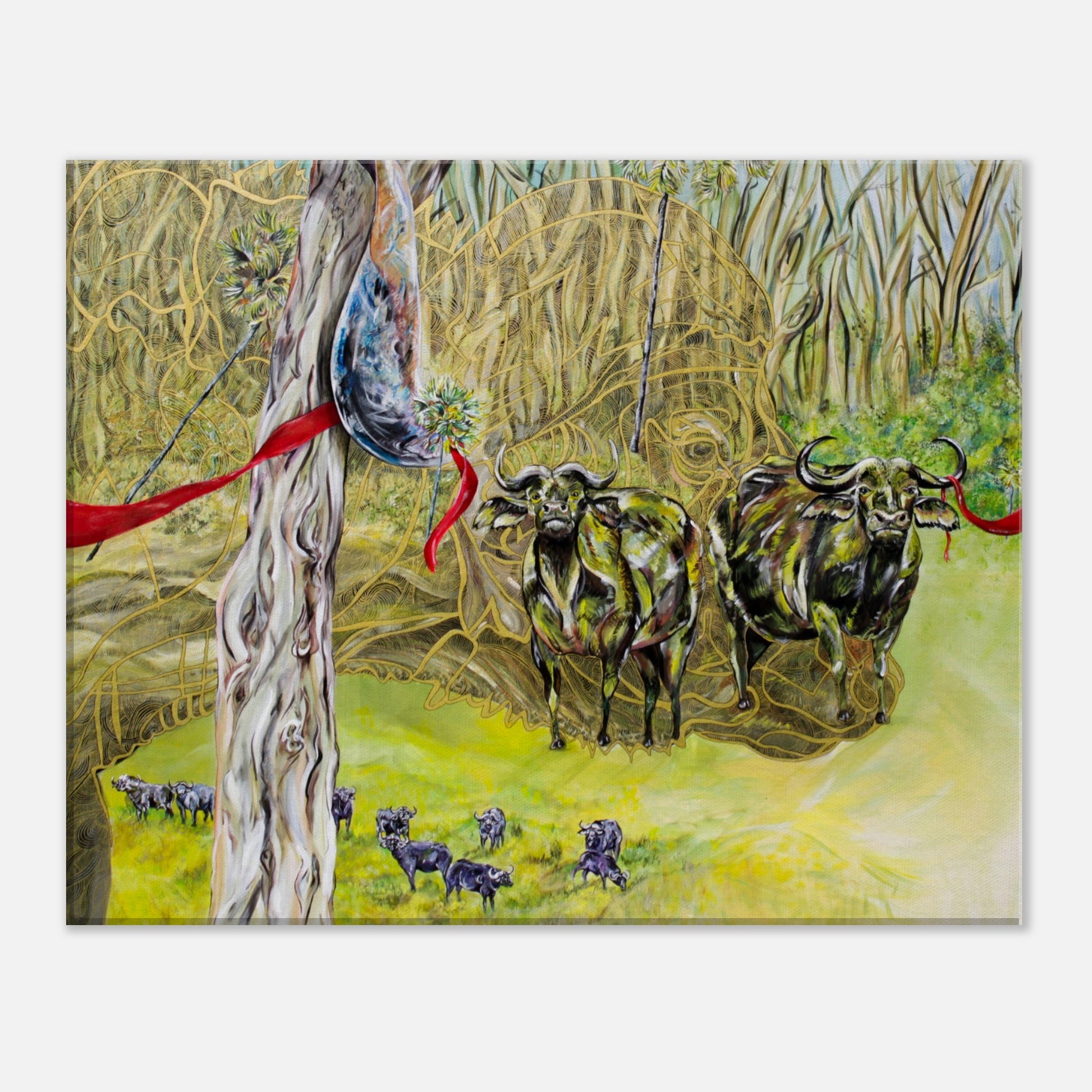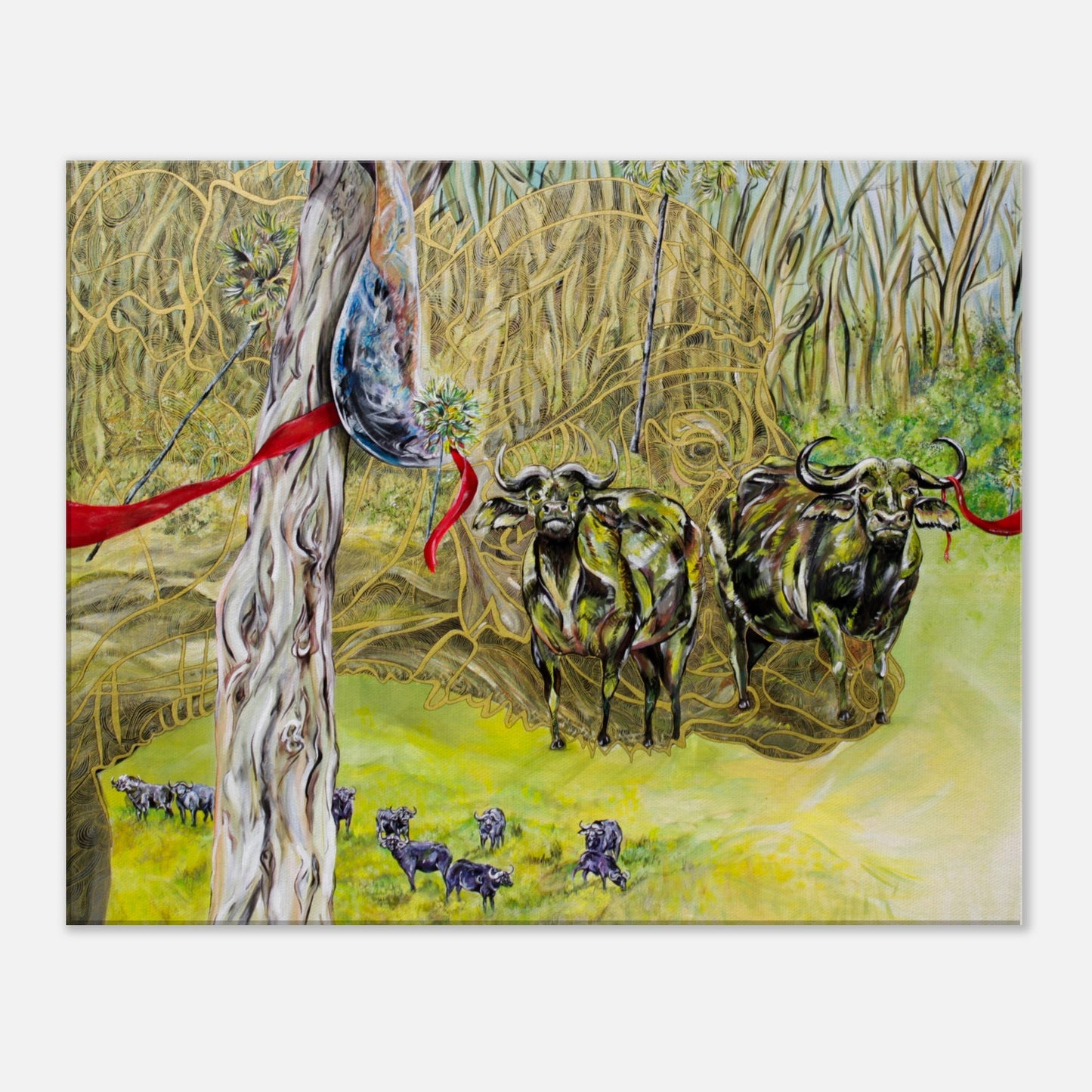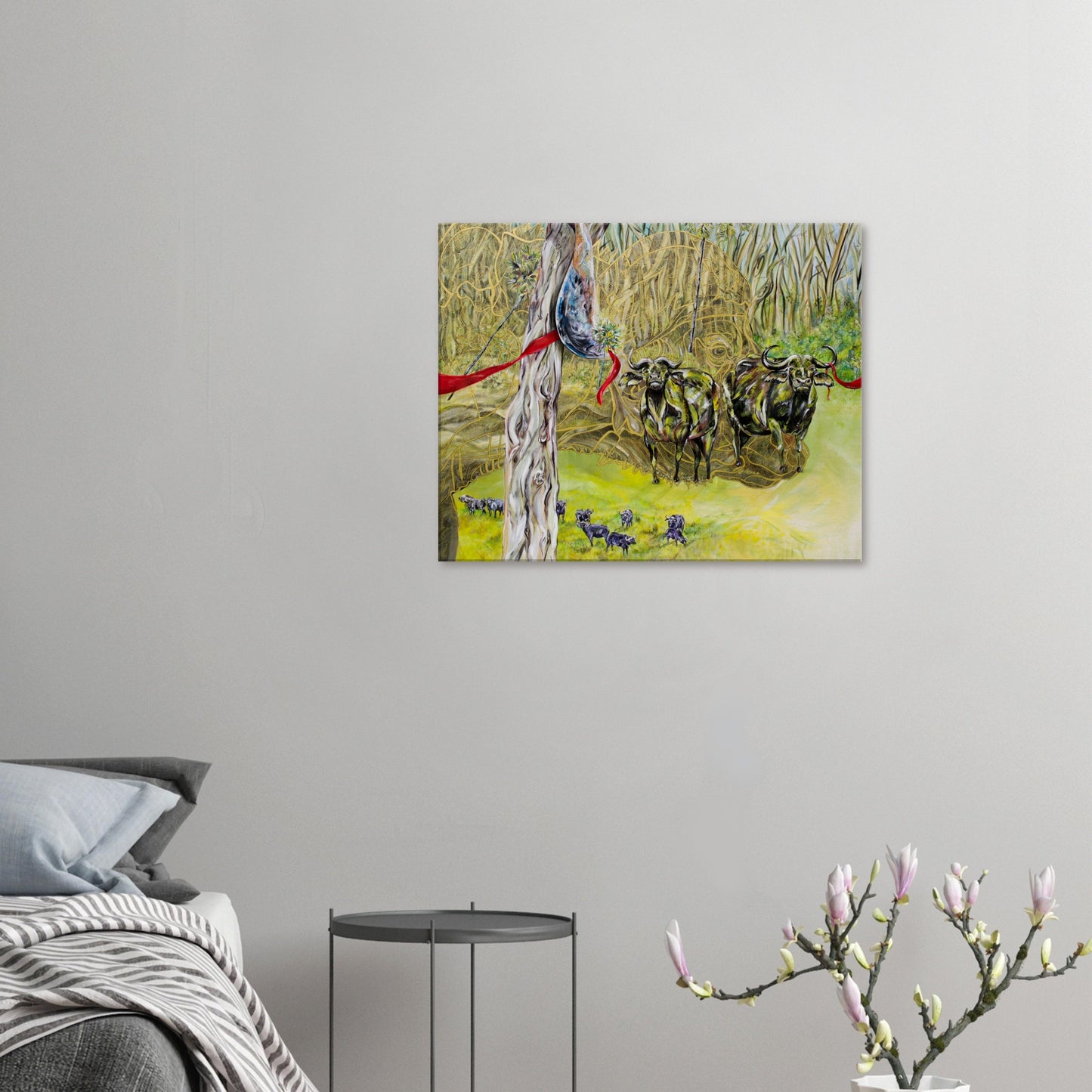What is a Cyanotype?
A cyanotype is a unique, historical photographic process that dates back to 1842. Originally used to create architectural blueprints, today, it's celebrated as an alternative art form due to its rich, distinctive blue tones. My artwork revives this ancient method, transforming it into an expression of modern creativity.

The Inspiration Behind My Cyanotype Artwork
It is an immense privilege for me to be invited to participate in the Picabella Summer Exhibition. For years, I’ve drawn infinite inspiration from these gardens and the significant cultural contributions of Picabella as a local business. The roses here have captivated me time and time again, so it felt essential to incorporate that motif into my artwork.
However, this piece is not just about Picabella; it’s also about blending the visual cultures of my two homes—Harare, Zimbabwe and Lisbon, Portugal. My Lisbon neighborhood is rich in history, dotted with the traditional Portuguese tiles known as Azulejos. These tiles have been a symbol of craftsmanship and cultural pride in Portugal for hundreds of years. As time, nature, and even thieves have taken their toll on these tiles, many facades now feature gaps where tiles used to be or are left with shattered remnants.
The repetitive, symmetrical patterns of Azulejos are beautiful in their predictability, but for me, the real intrigue lies in the gaps—the spaces where the tiles once were or the pieces that remain. Walking through my neighborhood, these broken tiles always evoke a deep emotional response in me. In this artwork, I wanted to merge the order of Azulejo patterns with unpredictability, layering them in a seemingly incoherent way to create something surprising and dynamic.
When suspended, the artwork allows light to pass through both sides, revealing the layered, unpredictable nature of the design—just like the fragmented tiles that have captured my attention over the years.

The Creative Process: Combining Roses, Azulejos, and AI
To create the Azulejo patterns in this artwork, I took photographs of tiles from around Lisbon that have inspired me, as well as photographs of roses from Picabella during my many visits. I then hand-drew rose compositions that I found visually engaging.
These elements were further developed using generative artificial intelligence (AI) through a platform called Eden.art. By blending my images and text prompts, I generated the tile patterns you see in this artwork. The patterns were then printed on transparent paper and used as negatives, similar to how you would expose a photograph in a traditional darkroom. The only difference? I used the sun’s power to develop the cyanotype.
In addition to the AI-generated patterns, I painted the cyanotype mixture directly onto the fabric using a brush or spray bottle and, at other times, coated the entire fabric before suspending it behind rose bushes in a park near my home in Lisbon. This combination of techniques, both traditional and modern, brings the essence of both my analogue and digital photographic interests into a single, cohesive piece.





The Cyanotype Process: Art Born from Chemistry and Sunlight
Creating a cyanotype involves mixing two special chemicals—Potassium Ferricyanide and Ferric Ammonium Citrate—to form a light-sensitive solution. I apply this to a surface, in this case, fine cotton fabric. Once the mixture is in place, the magic happens: exposure to ultraviolet (UV) light, which in my studio comes directly from the sun. As the UV rays hit the fabric, a series of chemical reactions occur, ultimately producing the stunning blue hues known as Prussian blue, or cyan.
Where light touches, the blue deepens; where shadows or objects block the light, the cotton stays white or fades into softer tones. The interplay between light and shadow makes each cyanotype a one-of-a-kind piece.

Can Cyanotypes Be More Than Blue? Absolutely.
For my work, I take cyanotype a step further by incorporating natural elements. I tone my cyanotypes with rooibos tea and red wine. The tannins in these ingredients interact with the cyanotype's iron particles, producing a range of colors, from warm reds and oranges to rich browns and yellows. Each layer builds complexity and depth, adding a spectrum of tonal variations. I also use oxygen bleach selectively to soften or remove the cyan color, creating further visual contrast.
Will Cyanotype Art Last Forever?
Cyanotypes can last a lifetime with proper care. While they're relatively stable, their colors may fade if exposed to strong ultraviolet light for long periods (LED light is not problematic). However, one of the fascinating aspects of cyanotypes is that they can "breathe" in a sense—resting them in shade or dim light can often bring their vibrancy back. To ensure longevity, it's important to keep the artwork away from alkaline substances like soap or bleach, as they can erode the image over time. Think of it as a living artwork, one that changes subtly with its environment.
A Dynamic Viewing Experience: No Right Side Up
This piece is designed to be viewed from any angle—there’s no designated top, bottom, front, or back. When suspended, light passes through the semi-transparent cotton, allowing the ghostly image on the reverse side to subtly emerge. I encourage viewers to explore the artwork from all perspectives. Just remember: no touching! Oily fingerprints can leave permanent marks on the fabric.

How I Create My Cyanotype Layers
This artwork is the result of a meticulous, layered process. I exposed the cotton to UV light 18 times, used bleach twice, and toned it six times with various natural substances. The first rinse was with apple cider vinegar, which enhances the mid-tones, while the subsequent rinses were done with water. Longer UV exposure darkens the blue, while shorter exposure creates softer, more ethereal shades. Over time, these layers build upon each other, creating depth, contrast, and complexity.
The Artistic Process Behind My Cyanotype:
- Coat the Cotton: The light-sensitive cyanotype mixture is applied to the fabric.
- Expose to UV Light: I harness the sun’s power to develop the image.
- Rinse: The fabric is rinsed to reveal the developing image.
- Develop: The cyanotype fully develops over 24 hours, revealing its full range of tones.



This artwork offers a unique fusion of cultural and personal inspiration, brought to life through traditional craft, and the power of the sun. For discerning collectors, this cyanotype represents not only a celebration of history and craftsmanship but also an exploration of modern artistic expression. It is available for purchase at the Picabella Summer Exhibition.

















